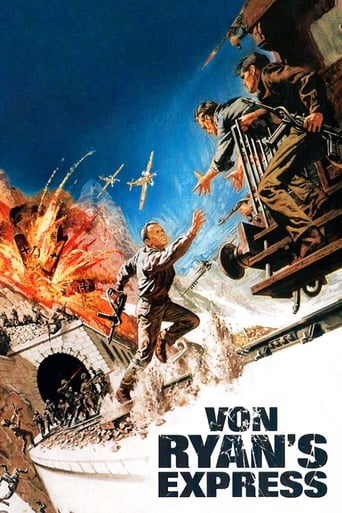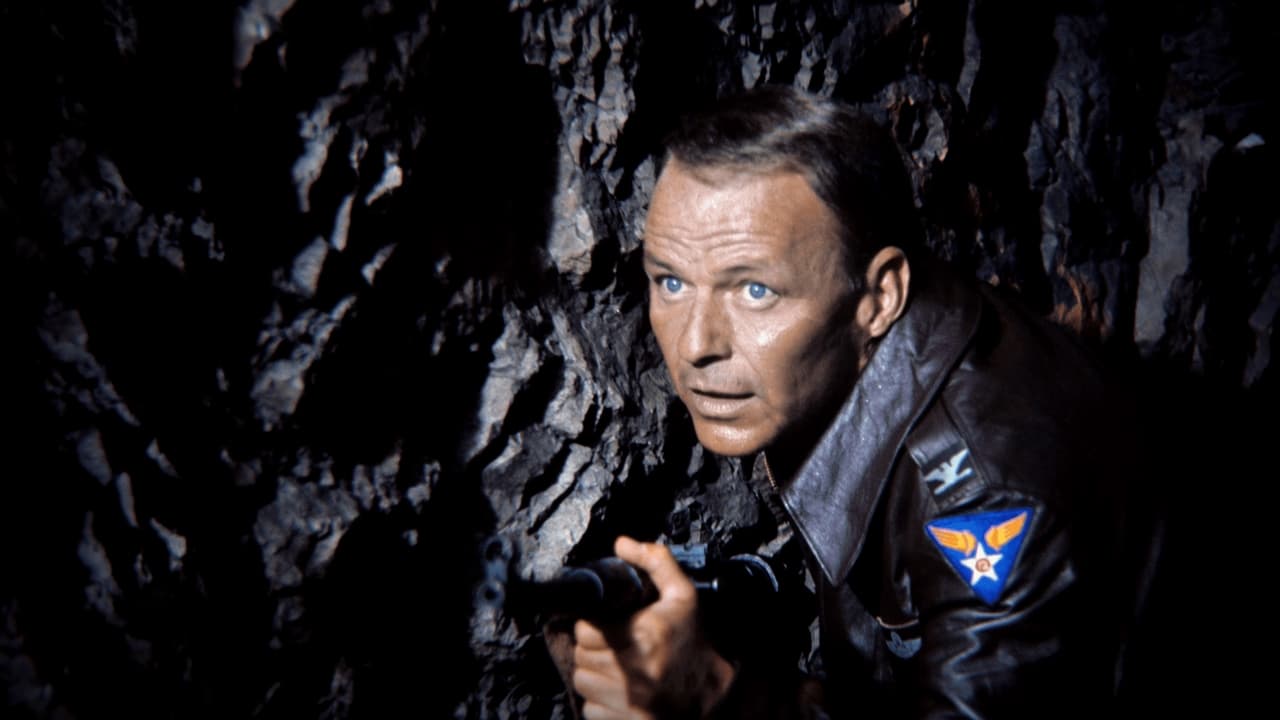vincentlynch-moonoi
...because I usually don't like war movies. Maybe one in twenty...and I saw lots of them because when my dad would come home on leave from the Air Force, if there was a World War II film at the theater, he would always drag me to see it. I also am sure this is a good film because I could take Frank Sinatra or leave Frank Sinatra...it just depended on the particular film (or for that matter, record). Sinatra could certainly tug at your heartstrings...occasionally...perhaps the best examples being "A Hole In The Head" and "The Joker Is Wild". He didn't pull at your heart strings in "Von Ryan's Express" (except for the very last couple of minutes), but he did turn in a very good performance here. Some have mentioned that he was too old for the part. Well, technically I suppose that is true, but if you're worrying about that, then you're too damn picky. Who was too old for the part was Trevor Howard. Actually, Howard and Sinatra were close to the same age, but Sinatra looks pretty good here, while Howard looks all washed out (of course, you could make the case that war will do that to you).The other actors here do nicely, too. As to the plot, implausible? Sure, like most movies out there. I didn't find myself suspending belief here any more than I have to for most films. I particularly liked seeing Edward Mulhare; a very good but largely forgotten supporting actor. You'll see other faces you recognize, as well, but probably not whose names you remember.Location shooting for this film helped a lot, although some of the locations were no in Italy, but instead in Spain.If you like Sinatra and war films even a little, I think you'll like this film. I recommend it. I give it a very strong "7".HOWEVER, if you are updating your DVD collection with Blu Ray discs...don't bother. The Blu Ray disc I bought of this was somewhat grainy in many spots. It won't prevent you from enjoying the film, but it is noticeable and occasionally distracting.
Dalbert Pringle
Released in 1965 (and starring a noticeably scrawny, 50-year-old Frank Sinatra as the title character), I honestly found this WW2, hero-worship, drama to be hardly worth getting very excited about.With its decidedly weak, paint-by-numbers storyline, this film certainly pushed the limits of daring and resourceful heroics just a little too far for their own good.If nothing else - This 2-hour war/drama (set in 1943 in Italy) definitely went well out of its way to prove to its audience that the Nazis were all just a bunch of bungling "dummkopfs" (natch). And, in the same breath, this film repeatedly reinforced Colonel Ryan's complete adaptability and quick-thinking as though it were his second language, or something.Anyway - For me, the comical highlight of this picture came about in a scene involving a pair of nylon stockings. I mean, you really need to see this scene for yourself in order to believe it in all of its utterly laughable absurdity.
tompbusiness
I always wondered why the prisoners just didn't get out and run through the train tunnel. At one point, they were trying to take a foot bridge around the mountain with Switzerland being on the other side of the mountain. If they had just run through the tunnel they would have been very well protected from the planes and the Germans on the troop train never would have caught them on time. It didn't make sense to me that the option they chose was to repair the track and drive the whole train through. One could argue it was because they had wounded to carry but that would have also applied to taking the footbridge around the mountain.
gilligan1965
FRANK SINATRA...the great crooner...was also a great actor! :)This movie (as well as others), are definitive proof of that! Frank was at his best in all of his movies...but, he was at the top in movies like "Ocean's Eleven;" "Assault on a Queen;" " None But the Brave;" "The Manchurian Candidate;" "Sergeants 3;" "From Here To Eternity;" and, many more, especially in this movie! Frank Sinatra was STARDOM-GOLD whether it be for his singing or acting, or, just being himself."Von Ryan's Express" is a classic World War II adventure of American and British POWs escaping from an Italian POW camp just as the Italians surrendered in World War II. Now, he and his men, with the help of an Italian Army Captain and a train conductor, are alluding and evading the Germans after 'stealing' a train.This is an EXCELLENT movie that all World War II buffs need to see! :)



 AD
AD



